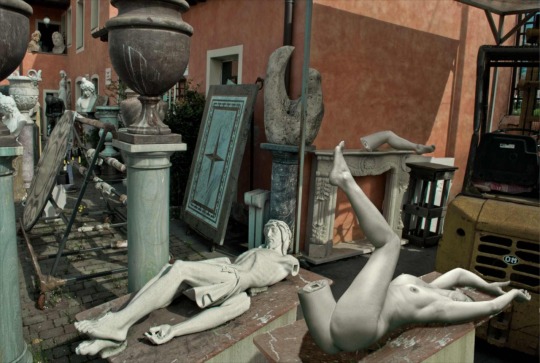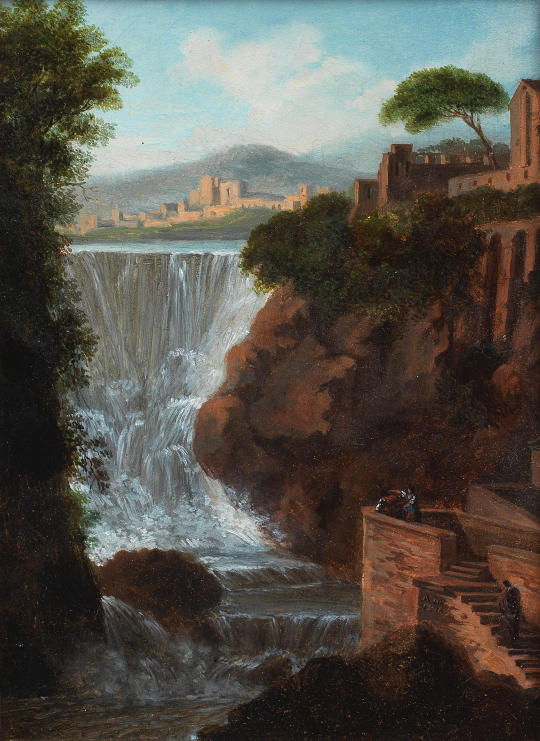#italian landscape
Explore tagged Tumblr posts
Text



Parenti, Calabria, Italy
Photos by @paoloscebbavideomaker_
Follow us on Instagram, @calabria_mediterranea
#parenti#Calabria#italy#calabria#italia#south italy#southern italy#hills#mountains#mountainscape#italian#europe#landscape#italian landscape#landscapes#nature#nature photography#architecture#flowers
44 notes
·
View notes
Text

Italian Landscape - Daryl Storrs , 2009.
American , b. 1960s -
Colour woodcut , 12 x 9 in.
4K notes
·
View notes
Text



View from Castel del Monte, Puglia
#travel#travel photography#puglia#italia#italy#photography#photographers on tumblr#nature photography#nature#trees#landscapes#landscape photography#landscape#italian landscape#forest#field#meadow#hills#europe#travel europe#travel blog#travel destinations#wanderlust#destinations#explore#naturecore
78 notes
·
View notes
Text

By Federica Giordano
#foggy#fog#mountains#mountain#wood#forest#autumn#fall#autumn aesthetic#nature aesthetic#imiging#canon#federica giordano#photography#federica giordano photography#tuscany#nature#toscana#italy#italian landscape#female photographers#lensblr#photographers on tumblr#artists on tumblr#naturescape#trees
54 notes
·
View notes
Text

🐱🌃
#gatti#cats#gatto rosso e bianco#orange and white cat#gatto bicolore rosso#orange tuxedo cat#gatto bianco e grigio#grey and white cat#gatto bicolore grigio#grey tuxedo cat#gatti in posa#posing cats#animali#animals#animali domestici#pets#amore#love#notte#night#landscape#paesaggio notturno#night landscape#paesaggio#paesaggio italiano#italian landscape#italia#italy
30 notes
·
View notes
Text




Palermo, Sicily, Italy
#palermo#sicily#italy#sicilia#italia#italian#southern italy#mediterranean#europe#vintage#south italy#italian landscape#italian landscapes#architecture#catholic#procession#virgin mary
26 notes
·
View notes
Photo



View of Naples with Castel dell'Ovo and Mount Vesuvius seen from the Salita di San' Antonio, 1819 by Franz Ludwig Catel
#Franz Ludwig Catel#romanticism#landscape#italian landscape#italy#naples#painting#oil painting#oil on canvas#art#19th century#19th century art#art details
507 notes
·
View notes
Text




clouds kinda look like a heart in the last one don't you think?
#italy#nature#landscape#sun#sky#sunset#trees#blue#cottagecore#italian summer#italian landscape#tuscany#mediterrenean#pink aesthetic#cozy cottage#cottage aesthetic#cotton candy#clouds#pink clouds#moon#sun and moon show
34 notes
·
View notes
Text

Dante and Beatrice
Artist: Henry George Alexander Holiday (British, 1882-1884)
Date: 1882-1884
Medium: Oil on canvas
Collection: National Museums of Liverpool, England, United Kingdom
Description
'Dante and Beatrice' was the most important painting by Henry Holiday. The theme of the painting is inspired by the autobiography Vita Nuova of the medieval poet Dante (1265-1321). Dante concealed his love for Beatrice by pretending to be attracted by other women. The scene depicted in the painting is that of Beatrice refusing to greet Dante because of the gossip that had reached her. Beatrice is the woman dressed in white and she was modelled by Eleanor Butcher. The woman next to Beatrice is Monna Vanna, a companion of Beatrice and the mistress of Dante's friend Guido Cavalcanti. Monna Vanna was modelled by Milly Hughes.
Holiday was concerned with the historically accurate representation of the scene and in 1881 he visited Florence to carry out research for his painting. In a letter from Florence he describes the project : "I wanted to get on the spot the general lie of the lines-the perspective, in fact, of the buildings and still more the sense of colour, and as far as possible to collect such fragments as remain of buildings of Dante's time, so as to be able to alter the details to the character of the period."
#painting#literary scene#dante#beatrice#italian landscape#dante and beatrice#oil on canvas#fine art#artwork#pre raphaelite brotherhood#ponte santa trinita#italy#buildings#birds#autobiograpny#vita nuova#literature#dante alighieri#italian poet#italian writer#italian philospher#florence#medieval#oil painting#henry holiday#british painter#british art#european art#pre raphaelite#national museums of liverpool
17 notes
·
View notes
Text

#italy#sicily#six-zero-two#my photos#summer#sicilia#summer in italy#taormina#naxos#giardini naxos#luxurious#photography#photooftheday#poolside#sunset#pool#dawn#luxury#palm trees#palms#garden#italian landscape#landscape#italian mountains#mountains
19 notes
·
View notes
Text
Scilla, Calabria, Italy
Video by @massimobellantoni77
Follow us on Instagram, @calabria_mediterranea
#scilla#calabria#italy#italia#south italy#southern italy#mediterranean#italian#europe#landscape#italian landscape#mediterranean sea#sea#seascape#seaside#flowers#nature#architecture
27 notes
·
View notes
Text

Fujishima Takeji
Florence, Italy
#fujishima takeji#japanese prints#japanese art#japanese artist#japanese aesthetic#florence italy#italian landscape#cityscape#Florence#aesthetic#beauty#woodcut#woodblock print#modern art#art history#aesthetictumblr#tumblraesthetic#tumblrpic#tumblrpictures#tumblr art#tumblrstyle
69 notes
·
View notes
Text
How the Renaissance Shaped the Italian Language
The Renaissance, a period of immense cultural, artistic, and intellectual growth in Europe, played a crucial role in the development of the modern Italian language. This era, spanning the 14th to the 17th century, witnessed a revival of interest in the classical art, literature, and learning of ancient Greece and Rome, significantly influencing the evolution of the Italian language.
Dante Alighieri's Contribution:
Dante Alighieri, often referred to as the "Father of the Italian language," was instrumental in establishing the Tuscan dialect as the standard for the Italian language. His most famous work, "The Divine Comedy" ("Divina Commedia"), written in the early 14th century, was one of the first major works of literature written in the vernacular, i.e., the local Tuscan dialect, instead of Latin. Dante's choice of the vernacular over Latin marked a pivotal moment in the development of Italian as a literary language.
Dante's works demonstrated the expressive and aesthetic possibilities of the Italian language, elevating its status and proving it could be used for serious, high literary pursuits, a domain previously reserved for Latin.
Petrarch's Influence:
Francesco Petrarca, known as Petrarch, further solidified the use of the vernacular in literature. He is best known for his Italian sonnet sequences, which focused on themes of love, personal reflection, and the human experience. Petrarch's poetry, particularly his "Canzoniere" (Songbook), greatly influenced Italian literature and language. His refined use of the vernacular and his development of the Italian sonnet format set a standard for lyrical poetry in Italian.
Boccaccio's Contributions:
Giovanni Boccaccio, another key figure of the Italian Renaissance, also contributed significantly to the development of the Italian language. His most famous work, "The Decameron," is a collection of novellas written in the vernacular. It not only had a profound impact on Italian literature but also helped to shape the Italian language by demonstrating its suitability for both serious and more lighthearted, secular topics.
Impact on Standardizing Italian:
The works of these authors were essential in the standardization of the Italian language. Their choice of the Tuscan dialect, particularly that of the Florentine region, as their literary medium contributed to its status as the basis of standard modern Italian.
Legacy and Continued Influence:
The Renaissance's focus on humanism and the return to classical sources also played a role in shaping the Italian language. This period encouraged a deeper exploration of the human condition, emotion, and intellect, aspects that were deeply integrated into the Italian language through literature and art.
In sum, the Renaissance was a period of reawakening that not only rediscovered the riches of classical antiquity but also set the foundation for the development of the modern Italian language. The works of Dante, Petrarch, and Boccaccio were not just literary masterpieces but also linguistic milestones that established the prestige and potential of the Italian vernacular, leading to its evolution into the modern Italian language we know today.
#italian language#learning italian#italian linguistics#renaissance#italian#italian literature#italian culture#romance languages#learning latin#latin linguistics#latin language#roman#italy#italian landscape
66 notes
·
View notes
Photo

Timeless Elegance: Frank Horvat's 2011 Carrara Portrait, Where Fashion Meets Italian Landscape
#frank horvat#portrait#contemporary#italian landscape#photography#black and white#minimalism#fashion
52 notes
·
View notes
Text


🌙🖤
#luna#moon#luna crescente#crescent moon#stella#star#notte#night#cielo#sky#cielo notturno#night sky#fotografia notturna#night photography#paesaggio notturno#night landscape#paesaggio#landscape#paesaggio italiano#italian landscape#italia#italy
8 notes
·
View notes
Photo

A view of the Waterfalls at Tivoli, 1814, attributed to Pierre Antoine Marchais
#Pierre Antoine Marchais#contemporary art#19th century art#art history#landscape#italian landscape#french art#french painter#painting#oil painting#oil on canvas
204 notes
·
View notes